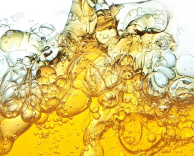Best practices for maintenance of FRF in turbine EHC system
What is a Turbine EH System ?
The most vital equipment of a power plant is the Electro-Hydraulic Control system (EHC system) of a turbine. It is the very soul of a turbine that directs steam into the turbine. An EHC failure can stop the turbine and then set off a series of events that will ultimately synchronize all processes in the power plant. The manager responsible for Operation & Maintenance finds it most challenging to keep the EHC system breakdown-free and operating reliably. To learn more, follow:
Source: LinkedIn
Since there is high steam pressure & temperature surrounding a steam turbine from a safety compliance perspective, it is mandatory to use Fire Resistant Fluids (FRF) for hydraulic control of the EHC system. A synthetic fluid with chemical tri-xylenyl phosphate ester, specially designed for the application, provides the most exposure to fire resistance.
Polar fluids, such as phosphate esters, are not only efficient for lubricating under harsh conditions but also exhibit a high-performance range.
Contrarily, in order for phosphate esters to be useful, they must be stringently controlled.
Water and Acids degrade FRF
Phosphate esters (used as FRF in EHC systems) are produced in a controlled environment via the esterification of phosphoric acid with the by-product water
Phosphoric Acid + Alcohol → Phosphate Ester + Water
Phosphate esters, on the other hand, have a high hygroscopic nature (tendency to absorb water) and the esterification process is reversible in the presence of water, causing instability of the phosphate ester in aqueous media with respect to quenching effects[43]. Aquatic discharge is is mess through this. Ester decomposition by hydrolysis is faster as the water content and temperature are higher.
Phosphate Ester + Water → Phosphoric Acid or Acid Phosphates + Alcohol
It can be desirable to manage the water level, temperature, and acid in the FRF of the EHC systems. The acid accumulates so quickly if left unchecked.
Total Acid Number (in unit mgKOH/gm) is an important parameter to represent acid content build-up in FRF. The high value of TAN deteriorates the fluid, having the effect of reducing fluid viscosity and resistivity. This results in acid corrosion of vulnerable EH System servo-valves and other system elements.
FRF de-gradation due to particles
There are also more contaminants that are not water or acid that can curtail the FRF.
As the dynamic oil film and clearing in the servo-valves is very small, < 5 microns, even the finest silt particles and sludge/varnish deposits from fluid degradation will hinder normal operation. Clearance between the valve plunger & housing traps fine particles. The abrasive wear can be referred to as either seizing or grinding. This may lead to wear rates up to 1000 times greater than estimated by the valve maker.
It only stands to reason that we employ very fine filtration (3-5 micron) for maintaining the EHC fluid. For any Technical Consultancy Call – +91 89751 50700
FRF degradation implications
- Formation of acid, gel, and sludge/varnish
- Valve sticking or blocking
- Low lubricity, poor film strength
- Corrosion, erosion and abrasion wear
- Reduced fluid resistivity
- Soot generation (entrained air)
- Short fluid life
FRF Condition-based monitoring
Fluid analysis of FRF should be regularly performed and trend abnormalities identified for preventive actions. Example Values for FRF Parameter Recommendations:
Parameter unit value
Appearance ASTM colour code clear, < 3
Water content ppm 500
Kinematic Viscosity (@40 0C) cSt 41-45
Acidity (TAN) mgKOH/gm < 0.15
Particle contamination code ISO 4406 15/12
Cleanliness code (NAS-1638) NAS 1638 5
Follow for more information Click Here.
Minimac® FRF Re-conditioning System consists of 4 major Steps, housed in 1 skid unit.
- Fine Filtration for the Contamination of Solids
- Separation of moisture in oil by vacuum dehydration technology
- TAN reduction through the Ion Exchange method
- Moisture removal from the EHC system tank by the Inert Gas Blanketing method
Conclusion
Maintaining the Fire Resistant Fluids (FRF) in a turbine's Electro-Hydraulic Control (EHC) system is crucial to ensuring the safety, reliability, and efficiency of power plant operations. Given the sensitive nature of phosphate esters and their susceptibility to water, acid, and particulate contamination, regular condition-based monitoring and fluid analysis are non-negotiable. By controlling Total Acid Number (TAN), ensuring superior cleanliness levels, and removing moisture effectively, power plants can drastically improve turbine availability and extend FRF life.
FAQs
- Measurement (for example, vibration, temperature, oil quality)
- Analyzing data (Recognizing/Searching trends and anomalies)
- Figure out (diagnostics — getting to the root cause)
- Predicting future equipment health and failure (prognostics)





